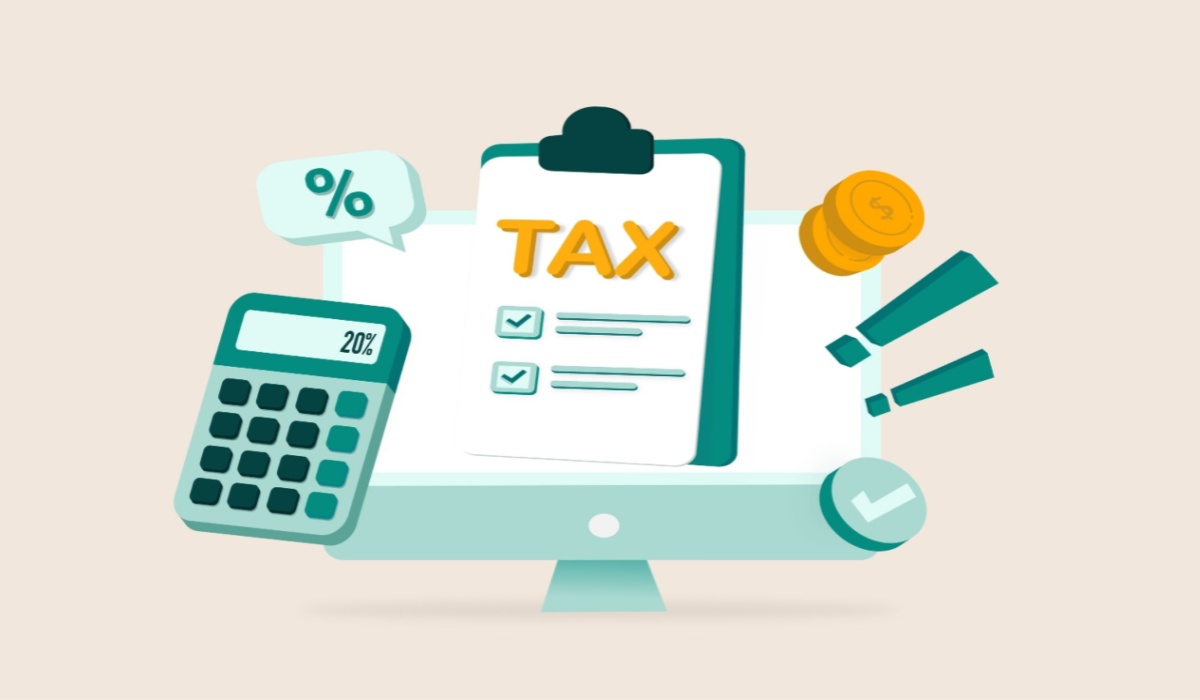Section 194JB of the Income Tax Act mandates tax deduction at source (TDS) on payments made to professionals or technical service providers. Individuals or Hindu Undivided Families (HUFs) not subject to tax audits must deduct 10% of TDS if payments exceed ₹50,000 in a financial year. This provision ensures compliance with tax obligations and helps prevent tax evasion, promoting transparency in payments for professional services. In this blog, we will explore the key aspects of this provision and how it affects both the payer and the payee.
Applicability of Section 194JB: Who Needs to Deduct TDS?
Section 194JB of Income Tax Act, 1961 mandates tax deduction at source (TDS) for specific payments made towards professional or technical services. The provision is particularly relevant when the aggregate payments for such services exceed a certain threshold during a financial year. Below are the key scenarios where Section 194JB applies, ensuring businesses and individuals remain compliant with the law while managing their finances effectively.
- TDS applies: When payments are made for technical or professional services as defined under the Act.
- Aggregate payments exceeding Rs 5,000: TDS is applicable if the total amount paid during the financial year exceeds Rs 5,000.
- Entities required to deduct TDS: The provision applies to all resident individuals, Association of Persons (AOPs), Body of Individuals (BOIs), and Hindu Undivided Families (HUFs).
- Tax under the correct head: The deduction falls under the appropriate tax head as per the 194JB of Income Tax Act under which head.
- ITR Filing: Ensure to use the correct ITR form for income tax return for 194JB, and file accordingly.
TDS Rate Under Section 194JB of the Income Tax Act 1961
Under Section 194JB of Income Tax Act, 1961, the rate of tax deduction at source (TDS) varies depending on the nature of the payment and the recipient’s availability of the Permanent Account Number (PAN). The provision is designed to ensure that professionals who receive payments for services, such as those related to Property Tax, Encumbrance Certificate, or Franking Charges, contribute their fair share of taxes. Below is a detailed overview of the TDS rates applicable under this section:
Unbeatable Price 5-Star Rated Partner! 2200+ Shades! Top Quality Paint Free Cancellation!

Get a rental agreement with doorstep delivery

Find the BEST deals and get unbelievable DISCOUNTS directly from builders!

5-Star rated painters, premium paints and services at the BEST PRICES!
- 2% TDS: This rate applies to payments made to professionals for technical or professional services when the total amount paid in a financial year exceeds ₹30,000. The 2% rate is applicable because the recipient is assumed to be a registered taxpayer, and thus, the tax deduction is minimal to account for the professional’s income tax liabilities.
- 10% TDS: If the recipient does not provide their Permanent Account Number (PAN), the TDS rate increases to 10%. This ensures that those without a PAN number, often perceived as non-compliant taxpayers, contribute a higher tax rate. The absence of a PAN complicates the taxpayer’s identification in the system, hence the increase in TDS to safeguard revenue collection.
- No TDS: If the total payment made to a professional does not exceed ₹30,000 in a financial year, no TDS is deducted under Section 194JB. This exemption applies to smaller payments, acknowledging that the administrative costs of collecting TDS for such minimal amounts may outweigh the benefits.
How to Calculate TDS under Section 194JB?
Calculating TDS under Section 194JB of the Income Tax Act involves a clear, step-by-step process. Here’s a breakdown of how to calculate the TDS for payments made for professional or technical services:
- Determine the Total Payment: Identify the total amount paid to the professional during the financial year. For instance, payments related to BBMP Property Tax, Franking Charges, or Sales Agreements should be included in this calculation.
- Check the Threshold Limit: Assess if the total payment exceeds the ₹30,000 threshold. If the payment is below this amount, TDS is not applicable. However, if it exceeds ₹30,000, TDS must be deducted.
- Identify the Applicable TDS Rate: If the payment exceeds ₹30,000, apply the relevant TDS rate:
- 2% TDS: If the professional has provided their Permanent Account Number (PAN).
- 10% TDS: If the professional has not provided their PAN. This higher rate is applied to safeguard tax compliance for non-PAN holders.
- Calculate the TDS: Multiply the total payment by the applicable TDS rate to determine how much tax must be deducted. For example, if payments are made for services like Legal Documents to Buy and Sell Property or Lease Deeds, calculate the TDS as per the above steps.
Example 1: PAN Provided
Scenario: A company pays ₹60,000 to a freelance accountant for professional services, and the accountant has provided their PAN.
- Total Payment: ₹60,000
- TDS Rate: 2% (since the PAN is provided)
- TDS Calculation: ₹60,000 * 2% = ₹1,200
In this case, the company will deduct ₹1,200 as TDS before making the final payment of ₹58,800 to the accountant.
This calculation would apply to various professional services such as Legal Documents to Buy and Sell Property, where the payment exceeds ₹30,000, and the professional has provided their PAN.
Example 2: PAN Not Provided
Scenario: A company pays ₹35,000 to a freelance writer for professional writing services, but the writer has not provided their PAN.
- Total Payment: ₹35,000
- TDS Rate: 10% (since PAN is not provided)
- TDS Calculation: ₹35,000 * 10% = ₹3,500
In this case, the company will deduct ₹3,500 as TDS before making the final payment of ₹31,500 to the writer.
This scenario could arise when professionals such as contractors or independent service providers fail to submit their PAN. It applies to services covered under Section 24 of the Income Tax Act or Lease Deeds.
Which ITR form is applicable for 194JB Section?
To file an income tax return for 194JB, professionals subject to TDS must use the ITR-3 form, designed for individuals and Hindu Undivided Families (HUFs) with income from business or profession. The ITR-3 form allows taxpayers to claim any TDS under Section 194JB of Income Tax Act. Common mistakes to avoid include failing to report professional and contractor income under the correct head and not correctly declaring TDS deductions. Ensure accurate reporting to avoid penalties under 194JB of Income Tax Act 1961.
Additionally, payers must comply with TDS filing requirements under Section 194JB. This includes:
- TDS Deduction: Payers must deduct 2% of TDS on payments to professionals. If the professional has not provided their PAN, the TDS rate increases to 10%.
- TDS Deposit: The deducted TDS amount must be deposited with the government by the 7th of the following month to ensure timely compliance and avoid penalties.
- TDS Return Filing: Payers must file quarterly TDS returns using Form 26Q to ensure accurate reporting of the TDS deducted.
Avoid common mistakes like failing to report professional and contractor income under the correct head and incorrectly declaring TDS deductions. Timely and accurate return filing is essential to prevent penalties under 194JB of the Income Tax Act 1961.
Under Which Head is Income from Section 194JB Taxed?
Income covered under Section 194JB of Income Tax Act is typically taxed under the “Income from Business or Profession” head. This section deals with the TDS deduction on payments made to professionals, such as consultants, accountants, or technical experts, and contractors who provide professional services. The income these professionals receive for their services is classified as income from business or profession as it arises from exercising their professional skills or trade.
Guidelines for Reporting Income from Professional Services or Contractor Work:
- Accurate Income Declaration: Professionals or contractors must report the entire income received for their services, subject to TDS, under the “Income from Business or Profession” head in their income tax return for 194JB.
- ITR Form Selection: Ensure to file the ITR-3 form, which is specifically designed for individuals and Hindu Undivided Families (HUFs) who have income from business or profession. Other professionals should choose an appropriate ITR form based on their income type.
- TDS Adjustment: Any TDS deducted under Section 194JB should be reflected in the tax calculation to adjust the payable tax or claim a refund if excess tax has been deducted.
Common Types of Income Under Section 194JB:
- Consultancy Fees: Income earned by professionals providing specialized consultancy services such as legal, financial, or management consulting.
- Freelancer Payments: Payments to freelancers, writers, designers, or other self-employed individuals offering professional services.
- Technical Expertise: Income received for technical services such as software development, IT services, or engineering expertise.
- Contractor Payments: Payments to contractors or sub-contractors offering technical or professional services like construction, architecture, or civil engineering.
Payment Limits and Thresholds for Section 194JB TDS Deductions
Section 194JB of the Income Tax Act ensures that TDS is deducted on payments for professional and technical services, but it also provides certain exemptions and threshold limits to simplify compliance. These provisions are designed to avoid unnecessary burdens for smaller taxpayers and businesses and streamline the TDS process for transactions involving government entities or smaller payments. Understanding these limits helps professionals and businesses plan their tax obligations effectively, ensuring smoother financial operations.
- Threshold Limit: TDS is not required if total payments to a professional do not exceed ₹30,000 in a financial year.
- Exemption for Individuals and HUFs: If not undergoing a tax audit, individuals and HUFs are exempt from deducting TDS under this section.
- Payments to Government Entities: TDS does not apply to government bodies or specified entities.
These exemptions help reduce the complexity of compliance for smaller taxpayers and transactions.
Compliance and Penalties for Non-Compliance Under Section 194JB
Under Section 194JB of the Income Tax Act, failure to deduct or pay TDS on time can result in severe penalties. If the taxpayer does not remit the deducted TDS to the Government, penalties can include an interest rate of 1% per month, along with a fine ranging from ₹10,000 to ₹1,00,000, depending on the severity of non-compliance.
How NoBroker Can Help with Legal Services?
At NoBroker, we make property transactions and legal documentation seamless for you. Whether you’re dealing with Property Tax, obtaining an Encumbrance Certificate, or drafting a Sales Agreement, our experts guide you every step of the way. We ensure all Legal Documents to Buy and Sell Property are in order, help you navigate Stamp Duty requirements, and ensure compliance with the Transfer of Property Act. If you’re a professional dealing with Section 194JB of the Income Tax Act, we assist you in understanding your tax obligations, filing the correct 194JB income tax return form, and clarifying the 194JB of Income Tax Act rate and limit.
Frequently Asked Questions
Ans: TDS (Tax Deducted at Source) is a tax collection mechanism in India where the payer deducts a certain percentage of tax from the payment they make to the payee. The deducted amount is then remitted directly to the government on behalf of the payee.
Ans: TDS is typically paid by individuals or businesses making payments such as salary, rent, or professional fees to others. The payer is responsible for deducting and remitting the tax to the government on behalf of the payee.
Ans: TDS is a tax on income that is deducted at the source of payment, while GST is a tax on the supply of goods and services. Both taxes are managed through different processes and serve different purposes in the tax structure.
Ans: To verify if TDS has been deducted from your salary, you can check your Form 26AS, which is available through the Income Tax Department’s portal. Alternatively, your employer should provide you with a TDS certificate.
Ans: TDS returns must be filed quarterly, with the last date for filing being the 31st of July, October, January, and May for each respective quarter. It is important to file within the due dates to avoid penalties.
Ans: For detailed information on Section 194JB, including TDS rates, exemptions, and legal compliance, it is advisable to consult legal or financial experts. They can offer guidance specific to your situation, ensuring compliance with tax laws.
Ans: If TDS is not deducted under Section 194JB, the payer may face penalties, interest charges, and legal consequences as per the Income Tax Act. Non-compliance can lead to financial liabilities and reputational damage.
Ans: Yes, professionals subject to TDS under Section 194JB can claim the deducted amount back by filing their income tax return using the appropriate form, such as the ITR-3. The tax will be refunded if the TDS exceeds the tax liability.
Ans: No, payments made to government entities are exempt from TDS under Section 194JB of the Income Tax Act. This exemption applies to transactions with government bodies and specific entities identified in the tax laws.
Ans: Section 194JB applies to professional and technical services, including services provided by professionals such as accountants, lawyers, architects, engineers, and consultants. These services are subject to TDS deduction at the specified rate.
Ans: No, Section 194JB applies only to payments made for professional and technical services. It does not apply to payments for goods, merchandise, or other non-professional services, which are covered by different tax provisions.
Recommended Reading


Loved what you read? Share it with others!
Srivalli is a finance wizard with a refreshing voice in the often-stodgy world of personal finance and investment. An ardent admirer of literature, she brings a deep understanding of language and storytelling to her writing. Srivalli’s Blogs on NoBroker brings a unique perspective to her writing on the Indian realty sector as a writer for the NoBroker Blog.
Source link




